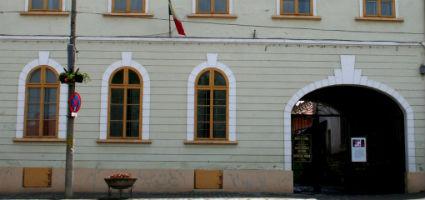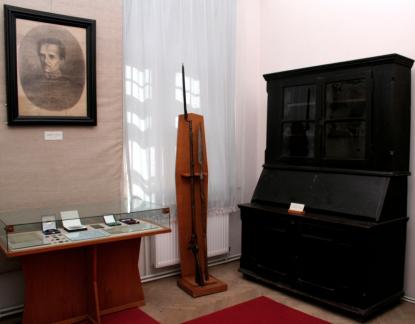2024. November 22. Friday
Guilds Museum - Tărgu Secuiesc
 |
Address: 525400, Tărgu Secuiesc 10. Udvartér, 1. sz.
Phone number: (267) 361-748
E-mail: cehmuzeum@easynet.ro
Opening hours: Tue-Fri 9-16, Sat 9-13, Sun 9-14
|
Museum tickets, service costs:
|
Ticket for adults
|
6 HUF
|
|
|
Ticket for students
|
3 HUF
|
|
|
Ticket for pensioners
|
3 HUF
|
Exhibitions on 1848-49 and local history are generally made up of documents and photos due to the lack of material records.

The history of Kézdivásárhely can be traced back in documents to 1407. The local history exhibition include charters guaranteeing right to holding fairs and the granting of town rank, as well as guild charters and documents in connection with local Architecture.
The most important historic event in Kézdivásárhely was the War of Independence in 1848-49. Local history records related to Kézdivásárhely are shown in two rooms. Among the few objects we are able to show, we have to mention a few weapons borrowed from the Székely National Museum, the only authentic portrait of Áron Gábor, a desk and cupboard made by Áron Gábor himself, a copy of a Áron Gábor cannon cast in Kézdivásárhely in 1971, busts of Lajos Kossuth, Mózes Turóczi, József Bem and Sándor Petőfi all by the sculptor András Vetró of Kézdivásárhely.

The history of Kézdivásárhely can be traced back in documents to 1407. The local history exhibition include charters guaranteeing right to holding fairs and the granting of town rank, as well as guild charters and documents in connection with local Architecture.
The most important historic event in Kézdivásárhely was the War of Independence in 1848-49. Local history records related to Kézdivásárhely are shown in two rooms. Among the few objects we are able to show, we have to mention a few weapons borrowed from the Székely National Museum, the only authentic portrait of Áron Gábor, a desk and cupboard made by Áron Gábor himself, a copy of a Áron Gábor cannon cast in Kézdivásárhely in 1971, busts of Lajos Kossuth, Mózes Turóczi, József Bem and Sándor Petőfi all by the sculptor András Vetró of Kézdivásárhely.
